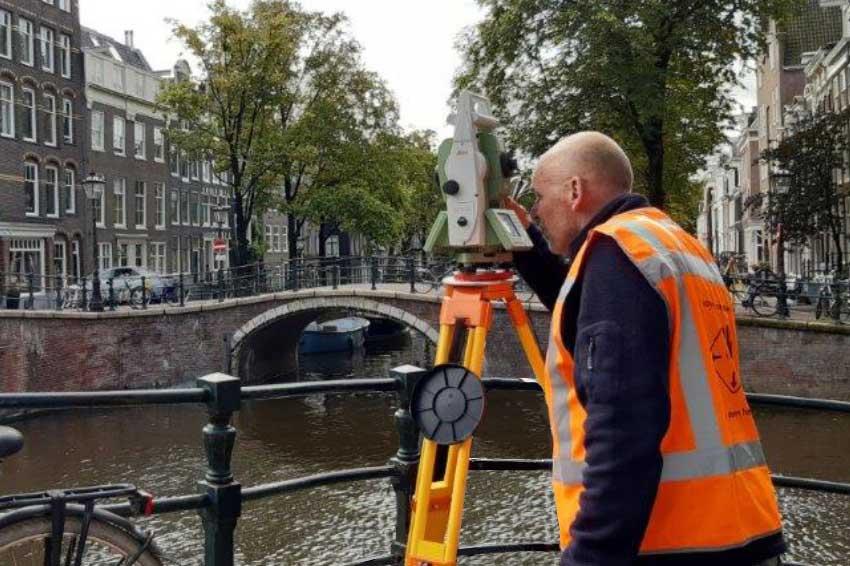Fugro’s technologies monitor Amsterdam’s bridges and quay walls
19.03.2021 - Mobile laser scanning technology for large-scale surveying of structural integrity
Fugro has undertaken a trial phase of their TotaLite and mobile laser scanning technology for the large-scale monitoring of bridges and quay walls as part of their framework contract with the City of Amsterdam. Fugro began testing and validating their technology in Amsterdam in mid-December and positive findings could result in more objects being monitored in a much shorter time compared to conventional survey methods.
Hundreds of bridges and kilometers of quay walls in Amsterdam have reached the end of their structural lifespan and are often in a poor state of repair. The City of Amsterdam launched their ‘Bridges and Quay Walls’ programme in 2019 to investigate, monitor and repair 829 bridges and 205 km of quay walls. Fugro has been involved from the outset, providing accurate and objective information using traditional survey measurement techniques based on tachymetry and levelling. Using these established methods, Fugro and two other service providers are currently measuring an average of eighty objects per month.
However, the size of the programme requires more efficient monitoring techniques and the TotaLite and mobile laser scanning are being trialled as a solution: it analyzes images taken from permanently fixed compact cameras to measure deformation and the mobile lasers scan bridges and quays from the water. Any deformations are accurately determined from the laser-acquired point clouds and the resulting Geo-data from both methods is immediately available for analysis via Fugro’s online platform Gaia.Monitoring, enabling Fugro to provide an efficient solution that will optimize repair and maintenance planning of the bridges and quay walls.
Bart Schoorl, Contract Manager at the City of Amsterdam, said: “The City of Amsterdam is challenging the market to come up with new solutions and innovations. Our framework monitoring contract allows room for trying existing techniques and we are using the outcomes to work together with service providers such as Fugro to find the best way to scale up.”
Martin van de Veer, Fugro’s Project Manager, said: “We are confident that these technologies will make an important contribution to the programme and achieve faster, more accurate and more cost-effective monitoring to improve the safety of Amsterdam’s bridges and quay walls for the city’s over 800,000 inhabitants.” (Source: Fugro)
Link: Terrestrial Survey, Fugro N.V., Leidschendam, The Netherlands






